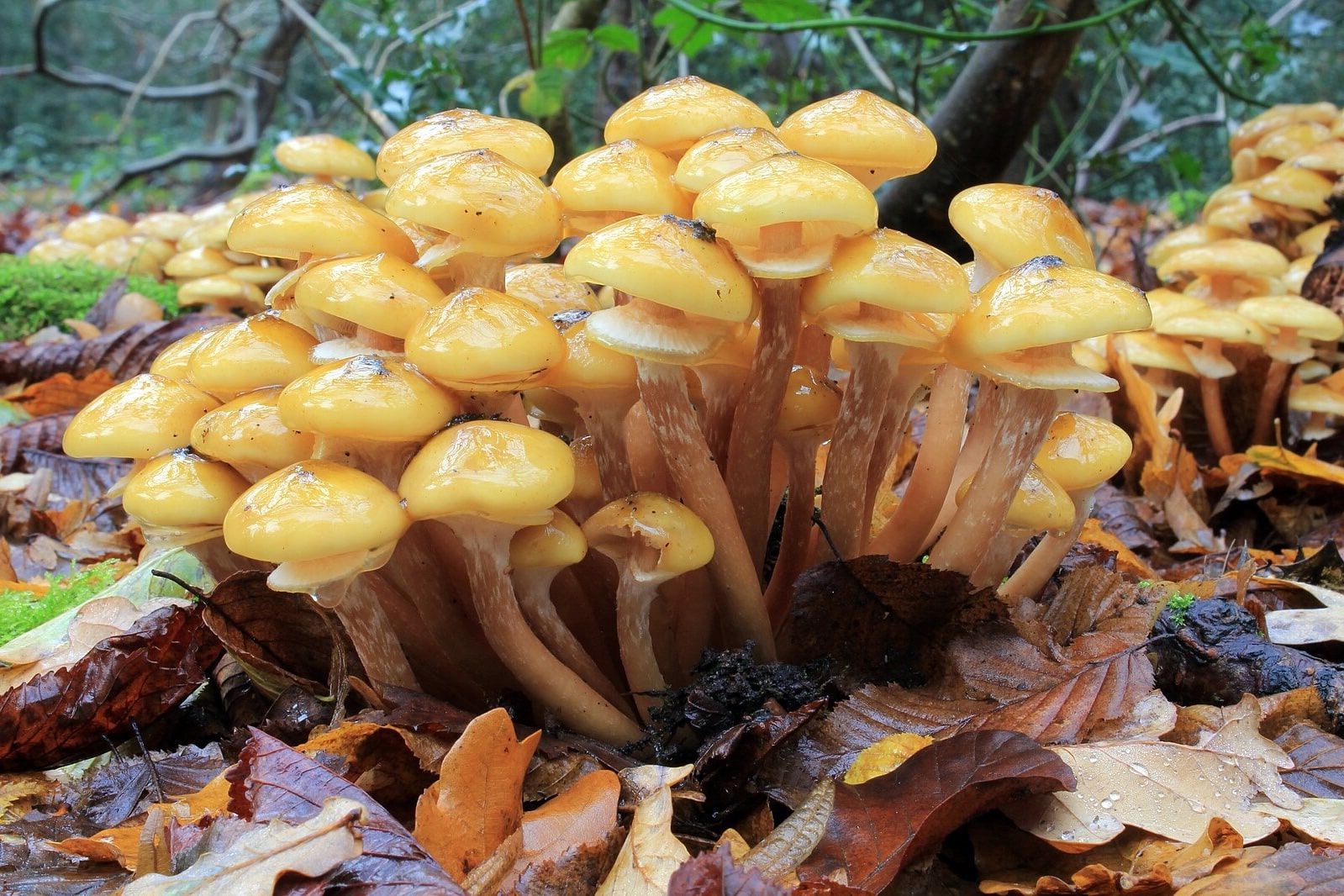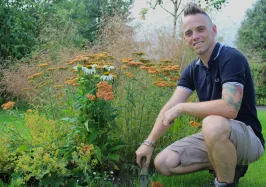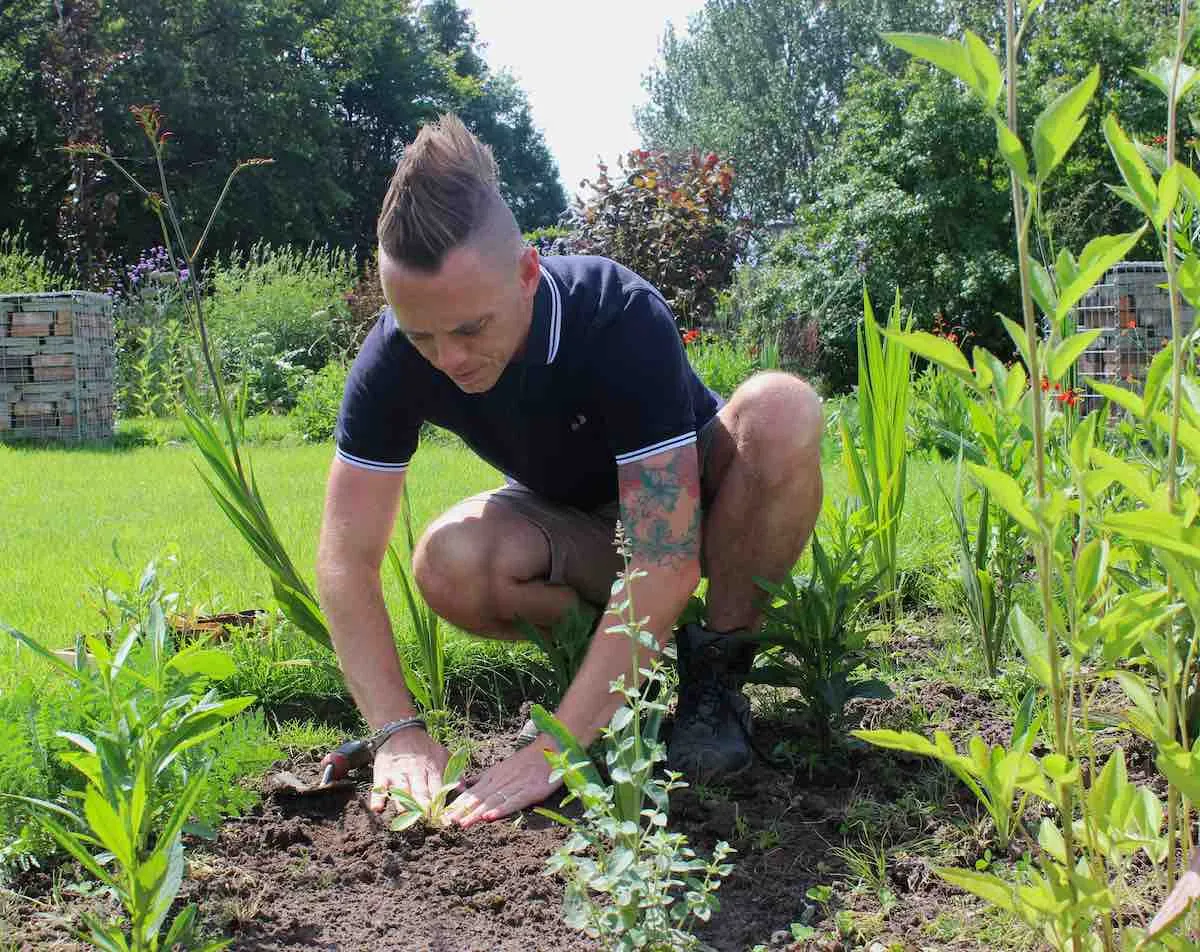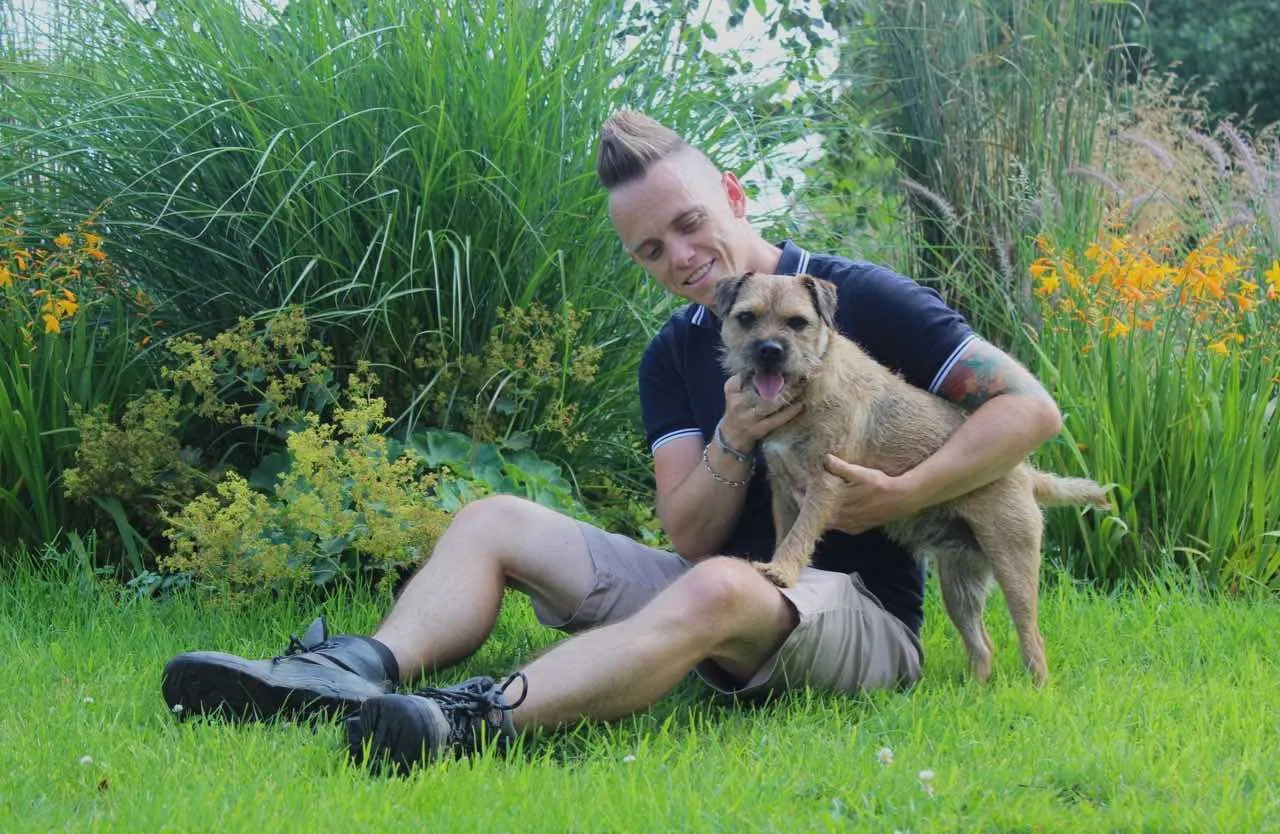-
Ask a Gardening Question Forum
 Lee Burkhill: Award Winning Designer & BBC 1's Garden Rescue Presenters Official Blog
Lee Burkhill: Award Winning Designer & BBC 1's Garden Rescue Presenters Official Blog

Welcome to the ultimate beginner gardening and garden design forum! Where no gardening question is too silly or obvious. This online gardening forum is run by Lee Burkhill, the Garden Ninja from BBC 1’s Garden Rescue and a trusted group of experienced gardeners.
Whether you are a beginner or an expert gardener, it’s a safe place to ask garden-related questions for garden design or planting. If you have a problem in your garden or need help, this is the Garden Forum for you! (See forum rules & moderation policy here)

Posting Rules: This space is open for all garden-related questions. Please be polite, courteous and respectful. If you wouldn’t say it to your mum’s face, then don’t post it here. Please don’t promote, sell, link spam or advertise here. Please don’t ask for ‘cheeky’ full Garden redesigns here. They will be deleted.
If you need a garden design service, please use this page to book a design consultation. I will block anyone who breaks these rules or is discourteous to the Garden Ninja Community.
Join the forum below with your gardening questions!
Quote from moonstone on 22nd June 2025, 8:08 pmI'm just starting out creating my first garden, but I've noticed that a wisteria I bought a few weeks ago now has small golden toadstools growing around the base of its stem. These have popped up in the last few days. I have heard of honey fungus, but have read that the toadstools don't appear until late summer/early autumn. However I'm worried about planting this wisteria anywhere near my woodland garden if it is, in fact, infected. I've uploaded a photo and would appreciate any advice that's being handed out. Thank you.
I'm just starting out creating my first garden, but I've noticed that a wisteria I bought a few weeks ago now has small golden toadstools growing around the base of its stem. These have popped up in the last few days. I have heard of honey fungus, but have read that the toadstools don't appear until late summer/early autumn. However I'm worried about planting this wisteria anywhere near my woodland garden if it is, in fact, infected. I've uploaded a photo and would appreciate any advice that's being handed out. Thank you.
Uploaded files:Quote from Lee Garden Ninja on 25th June 2025, 11:08 amHi @moonstone
Thanks for getting in touch about honey fungus. Honey fungus is a really nasty tree/shrub fungus that can kill plants and is a bit of a death sentence for most unless treated and dug out.
The good news is that the image you have is NOT honey fungus. It's just regular mushroom compost. With all compost and healthy soil, you may find from time to time small mushrooms appear near the base of plants, due to the mycelium network which uses plant roots, amongst other things, in a symbiotic way for sugars in return for water and nutrients. It's truly fascinating when you look into it.
These should be left alone, are harmless, beneficial mushrooms and pose no threat!
Honey Fungus: How to Identify It and How to Treat It – A Detailed Guide
A classic example of honey fungus is below. It's bright yellow and sticky, looking like Honey. Let's take a closer look at Honey Fungus and how to identify it and treat it for other Ninjas who may be looking for gardening guidance on it.
Honey fungus, caused by several species of the Armillaria genus, is one of the most destructive fungal diseases in gardens. It attacks and kills the roots of many woody and perennial plants, leading to dieback, decay, and often the death of the entire plant. Recognising the signs early and understanding how to manage the disease are essential for maintaining a healthy garden.
What is Honey Fungus?
Honey fungus refers to a group of parasitic fungi that live on wood and spread underground via long, black, bootlace-like rhizomorphs. These rhizomorphs travel through soil and infect the roots of living plants, eventually colonising the base and lower stems. Once the fungus invades the plant’s tissues, it interferes with water and nutrient uptake, slowly starving and killing the plant. These are sometimes referred to as 'bootstrap fungus' or honey bootstraps.
There are several species of Armillaria, with Armillaria mellea being the most aggressive in the UK. This species is most commonly found in gardens, especially where soil has been disturbed or organic matter is abundant.
How to Identify Honey Fungus
The first signs of honey fungus are often subtle and can easily be mistaken for general decline or poor health. Affected plants may show reduced vigour, smaller leaves, early autumn colouring, and dieback in stems and branches. In some cases, leaves may yellow or wilt suddenly, especially during dry periods, as the damaged roots fail to supply enough water.
One of the most telling signs is the presence of white fungal mycelium between the bark and wood at the base of the stem or root collar. If you carefully peel back the outer bark near soil level, you may see a white, creamy, fan-shaped sheet of fungal growth. This mycelium smells strongly of mushrooms and is a clear diagnostic feature.
Black rhizomorphs are another key indicator. These root-like structures can be found in the soil surrounding infected plants. They are tough, black, and look like shoelaces, often stretching several metres underground in search of new hosts.
In late summer or autumn, clusters of honey-coloured toadstools may appear around the base of infected stumps or trees. These fruiting bodies are typically found in clumps and have a yellow-brown cap, white gills, and a distinctive ring around the stem. However, these mushrooms don’t appear every year and usually only emerge once the fungus has fully established itself in a host.
How to Treat and Control Honey Fungus
Unfortunately, there is no chemical cure for honey fungus available to home gardeners, so once you have it, you need to get rid of it ASAP or it will spread and take out other trees and shrubs. Control relies on cultural methods and management practices to reduce the spread and limit damage.
The first step is to confirm the presence of honey fungus through visual inspection. Once identified, the ENTIRE-infected plant should be removed promptly, including as much of the root system as possible. Destroy all affected plant material by burning or removing it from the site—do not compost it, as the fungus can survive and spread further.
Dig out and remove infected stumps, if feasible, as the fungus thrives on decaying wood. If complete removal isn’t possible, consider deep trenching around the infected area to create a physical barrier. Trench edges lined with heavy-duty plastic sheeting can help limit the spread of rhizomorphs into surrounding soil.
Replanting in infected soil should be approached with caution. Choose resistant species, as some plants are more tolerant of honey fungus than others. These include many conifers like juniper and yew, as well as ornamental shrubs like Mahonia and Viburnum tinus. Avoid replanting with highly susceptible species such as apples, cherries, and roses.
https://youtu.be/ar9v5eLcV-g
Improving overall soil drainage and aeration can reduce the likelihood of honey fungus taking hold. The fungus prefers moist, compacted soils with high organic content, so breaking up heavy soils and avoiding over-mulching with wood chips near plant bases can help reduce risk.
Where possible, avoid wounding the roots or lower stems of plants during maintenance, as wounds provide an easy entry point for the fungus. Keep plants healthy through proper watering, feeding, and pruning, as strong, vigorous plants are more resistant to infection.
I hope that helps!
All the best
Hi @moonstone
Thanks for getting in touch about honey fungus. Honey fungus is a really nasty tree/shrub fungus that can kill plants and is a bit of a death sentence for most unless treated and dug out.
The good news is that the image you have is NOT honey fungus. It's just regular mushroom compost. With all compost and healthy soil, you may find from time to time small mushrooms appear near the base of plants, due to the mycelium network which uses plant roots, amongst other things, in a symbiotic way for sugars in return for water and nutrients. It's truly fascinating when you look into it.
These should be left alone, are harmless, beneficial mushrooms and pose no threat!
A classic example of honey fungus is below. It's bright yellow and sticky, looking like Honey. Let's take a closer look at Honey Fungus and how to identify it and treat it for other Ninjas who may be looking for gardening guidance on it.

Honey fungus, caused by several species of the Armillaria genus, is one of the most destructive fungal diseases in gardens. It attacks and kills the roots of many woody and perennial plants, leading to dieback, decay, and often the death of the entire plant. Recognising the signs early and understanding how to manage the disease are essential for maintaining a healthy garden.
Honey fungus refers to a group of parasitic fungi that live on wood and spread underground via long, black, bootlace-like rhizomorphs. These rhizomorphs travel through soil and infect the roots of living plants, eventually colonising the base and lower stems. Once the fungus invades the plant’s tissues, it interferes with water and nutrient uptake, slowly starving and killing the plant. These are sometimes referred to as 'bootstrap fungus' or honey bootstraps.
There are several species of Armillaria, with Armillaria mellea being the most aggressive in the UK. This species is most commonly found in gardens, especially where soil has been disturbed or organic matter is abundant.
The first signs of honey fungus are often subtle and can easily be mistaken for general decline or poor health. Affected plants may show reduced vigour, smaller leaves, early autumn colouring, and dieback in stems and branches. In some cases, leaves may yellow or wilt suddenly, especially during dry periods, as the damaged roots fail to supply enough water.
One of the most telling signs is the presence of white fungal mycelium between the bark and wood at the base of the stem or root collar. If you carefully peel back the outer bark near soil level, you may see a white, creamy, fan-shaped sheet of fungal growth. This mycelium smells strongly of mushrooms and is a clear diagnostic feature.
Black rhizomorphs are another key indicator. These root-like structures can be found in the soil surrounding infected plants. They are tough, black, and look like shoelaces, often stretching several metres underground in search of new hosts.
In late summer or autumn, clusters of honey-coloured toadstools may appear around the base of infected stumps or trees. These fruiting bodies are typically found in clumps and have a yellow-brown cap, white gills, and a distinctive ring around the stem. However, these mushrooms don’t appear every year and usually only emerge once the fungus has fully established itself in a host.
Unfortunately, there is no chemical cure for honey fungus available to home gardeners, so once you have it, you need to get rid of it ASAP or it will spread and take out other trees and shrubs. Control relies on cultural methods and management practices to reduce the spread and limit damage.
The first step is to confirm the presence of honey fungus through visual inspection. Once identified, the ENTIRE-infected plant should be removed promptly, including as much of the root system as possible. Destroy all affected plant material by burning or removing it from the site—do not compost it, as the fungus can survive and spread further.
Dig out and remove infected stumps, if feasible, as the fungus thrives on decaying wood. If complete removal isn’t possible, consider deep trenching around the infected area to create a physical barrier. Trench edges lined with heavy-duty plastic sheeting can help limit the spread of rhizomorphs into surrounding soil.
Replanting in infected soil should be approached with caution. Choose resistant species, as some plants are more tolerant of honey fungus than others. These include many conifers like juniper and yew, as well as ornamental shrubs like Mahonia and Viburnum tinus. Avoid replanting with highly susceptible species such as apples, cherries, and roses.
Improving overall soil drainage and aeration can reduce the likelihood of honey fungus taking hold. The fungus prefers moist, compacted soils with high organic content, so breaking up heavy soils and avoiding over-mulching with wood chips near plant bases can help reduce risk.
Where possible, avoid wounding the roots or lower stems of plants during maintenance, as wounds provide an easy entry point for the fungus. Keep plants healthy through proper watering, feeding, and pruning, as strong, vigorous plants are more resistant to infection.
I hope that helps!
All the best
Quote from moonstone on 25th June 2025, 5:25 pmThank you Lee. That's wonderful news. The detailed info regarding Honey Fungus was an interesting read too. Also thank you for posting your video on how to plant trees correctly. I shall certainly be watching that as I have a few I need to get in the ground such as mountain ash and japanese acers.
I have another question for you, but that's for a different section of the forum. Hopefully I'll see you over there soon!!
Thank you Lee. That's wonderful news. The detailed info regarding Honey Fungus was an interesting read too. Also thank you for posting your video on how to plant trees correctly. I shall certainly be watching that as I have a few I need to get in the ground such as mountain ash and japanese acers.
I have another question for you, but that's for a different section of the forum. Hopefully I'll see you over there soon!!


Vuelo Top 10 Garden Blogger Award 2019
Chelsea Flower Show Director Generals Trade Stand Award 2018
5 Star Trade Stand Hampton Court 2018
Garden Media Guild New Talent 2017 Finalist
RHS & BBC Feel Good Gardens Winner 2016

JOIN THE NINJAS
Join our Ninja community for your Exclusive Discounts
JOIN THE NINJAS

Be the first in line for new Guides, Discount codes and Offers